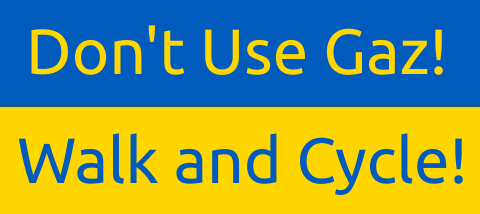This week there has been much confusion about 2 short sections of cycle route that have appeared on Corporation Street. The Birmingham Mail have even done a story on this, calling them the shortest sections of cycle lane in Birmingham. The reporter did try to contact Push Bikes, but we replied after her deadline, I think. This was unfortunate, as the person she spoke to at Birmingham City Council does not appear to have known that they form part of a planned cycle route from Bull Street to New Street Station. To set the record straight, although there are significant issues with the implementation of this route, the idea behind it does show consideration for cycle users.
A couple of years ago, Push Bikes campaigners attended a meeting with Centro and Birmingham City Council to look at ways to take cycle users around these tram tracks, and the route indicated in the map below shows what was agreed. Cannon Street is a good fit for a parallel route next to Corporation Street, away from the tram tracks and in a less crowded area. The section of Corporation Street with the tram tracks and cycle route together is flat, and as such presents fewer issues for mixing the two. Trams on Corporation Street will be moving slowly anyway due to the high volume of pedestrians, and most cycle users will be able to go faster - the main frustration being cycle users getting stuck behind trams at the tram stops.
So, having said that the route is a good one and shows some care for cycle users, let's deal with the issues.
Design failures:
Firstly, on the Corporation Street section of the route, cycles will have a narrow space between the vertical kerb and the tram rail. Vertical kerbs will knock off cycle users who try to cross them at a tight angle. With the large number of pedestrians in this area we can expect cycle users to have to dodge around people walking in the road, and having this vertical kerb will present a danger. It is possible to get kerbs that are angled, and these are much safer for cycle users to ride up at an angle. Angled kerbs should have been incorporated into the designs here and would have greatly improved safety for cycle users.
Secondly, at the Bull Street / Corporation Street cross-roads, trams, buses and pedestrians have been accommodated for, but cycle users have not. There are no cycle crossings here, despite cycle users wanting to use at least 3 of the 4 arms for through routes. The result will be that some cycle users will mix with the trams and buses while others will mix with the pedestrians. With no clear routes that are best for cycle users, they will ride everywhere, increasing their unpredictability. That is poor design and will frustrate tram and bus drivers.
Thirdly, where the cycle route crosses Corporation Street to join Cherry Street, the angle that cycle users will have to turn is too sharp and they are expected to dismount and push across the pedestrian crossing. This is an unacceptable design, considering that the whole road has been ripped up and resurfaced. There should have been a clear cycle crossing implemented here to make sure that the route was immediately understandable to cycle users who are not familiar with it. In addition, it is discriminatory to ask cycle users to get off and push, when there are people with disabilities who use their cycles as mobility aids.
Signage failures:
Firstly, the arrows for the two short sections of 'cycle lane' point at the start of the dropped kerbs. Cycle user who are not familiar with the route and are distracted (perhaps by all the pedestrians) may try to join the pavement too early, and be knocked off by the vertical kerb. The white lines and arrows should be burnt off and re-painted to give best guidance to cycle users as to where it is safest to join the pavement.
Secondly, at Bull Street, we were told that the pavement between Corporation Street and Temple Row would be shared-use pavement cycling. That clearly has not happened, although there is one shared-use sign that appears to be contradicted by all the other signs. Push Bikes has not received any updates on changes to this route, and so we are in the dark as to why the promise of shared-use pavement cycling was reneged on here.
Thirdly, at the entrance to Cannon Street there are no signs telling cycle users that they can legitimately cycle contra-flow. If the route is sign posted up that street, the long term effect will be to encourage cycle users to ignore other 'no entry' signs. Push Bikes is clear on this - 'no entry' signs are very important and should be obeyed by all road-users. We want to see wide spread use of contra-flow cycling, but with the appropriate 'except cyclists' signs so that when a 'no entry' sign really matters, everyone will pay attention to it.
Finally, the signs overall are very patchy. In several places I only knew where to go because of the meeting that I had been in a few years ago. Routes need to be clearly signposted and part of the work on the route should be for someone to cycle along it both ways who does not know where they should go. If they can not navigate from the signs alone, then more signs are needed. Birmingham City Council is working on a city centre strategy as part of the Birmingham Cycle Revolution, and a lot of that work will be thinking about what signs will be most effective and where. That will take time and so I don't expect brilliant signs across the city centre immediately. But surely at least this route could have had sufficient signs?
Birmingham city centre.jpg



